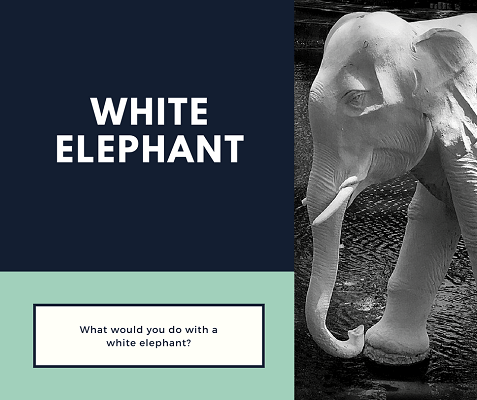
YouTube / iTunes / Spotify / Radio Public / Pocket Casts / Google Podcasts / Breaker / Overcast
Listen to ArtisanEnglish.jp posts & lesson intros here.
WotD: White elephant
Perhaps your first thought is that you have never seen a white elephant.
I’m here to tell you that you have and you’ve seen them more than once.
If you’ve never been to a zoo, you have seen a white elephant – perhaps more than once.
White elephants are expensive things that have no useful purpose.
Governments are the world’s largest creators of things like this.
All you have to do is drive around, and you will quickly find examples scattered across the landscape.
Living in Japan and knowing a little about its recent history, I can assure you that Japan has had more than its fair share of white elephants.
Did you know that during the Japanese economic boom, the national government gave ¥1,000,000,000 (billion) to every town to spend however they wished?
In some cases, large bricks of ¥10,000 bills were flown in by helicopter and accepted in a ceremony by the local mayors.
Then the white elephant construction boom began.
A fool and his money are soon parted, as the saying goes.
Every country has its fair share of fools and spendthrifts – Japan is no exception.
Karaoke bars were built in the middle of farming communities, roads to nowhere were constructed, and massive concrete and steel imitations of fruit were erected along local highways.
It was a celebration of wealth, and the white elephant was worshipped.
Do you know the origin of the term white elephant?
They do exist.
They’re not white but lightly coloured.
In ancient times the kings of Siam (present-day Thailand) would give a white elephant to people they didn’t like or thought were a threat.
Elephants are, of course, expensive to feed and maintain.
Over time the ‘gift’ would bankrupt the receiver, and they would no longer be a threat to the king.
Flesch-Kincaid Readability Test
This post is understandable by someone with at least a 7th-grade education (age 12).
On the Flesch-Kincaid reading-ease test, this post scores 72.
The easier a passage is to read, the higher the score on a scale of 0 – 100.

